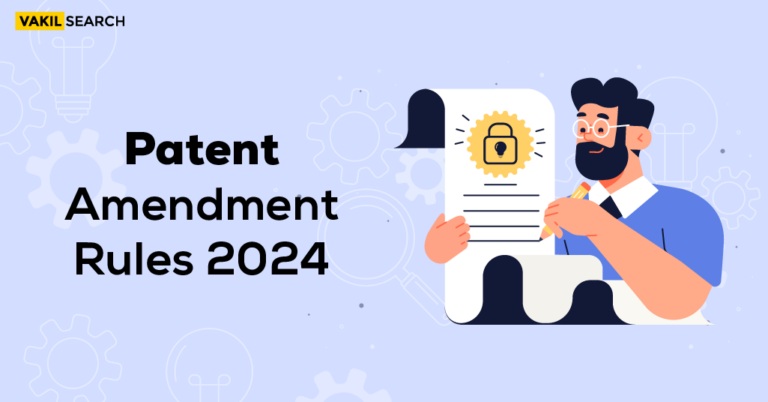we will discuss what mistakes you should avoid when filling out a provisional patent application in India. Read on to know!
What is a Provisional Patent?
A provisional patent is a type of patent application that provides temporary protection for an invention. It establishes an early filing date and allows the inventor to use the term “patent pending” while they further develop and refine their invention.
A provisional patent application does not require the same level of formal requirements as a non-provisional patent application, making it a more accessible and cost-effective option for inventors
What Mistakes to Avoid when Filing Provisional Patents?
When filing a provisional patent application, there are several common mistakes that inventors should avoid:
- Allocating insufficient resources: Failing to allocate enough resources to obtain a patent can hinder the application process
- Not conducting a patent search: Failing to conduct a thorough prior art search can result in the disclosure of prior art related to the invention, which may impact the patentability
- Filing a low-quality provisional patent application: A rough or incomplete provisional patent application may not provide adequate protection for the invention. It is important to promptly clean up and flesh out the invention if a quick and rough provisional application is filed
- Not disclosing all relevant prior art: It is crucial to disclose all prior art related to the invention in the patent application. Working with a patent attorney or agent can help identify and disclose relevant prior art.
- Unclear claims: Unclear or poorly drafted claims can lead to difficulties in obtaining a patent. It is important to carefully craft clear and concise claims that accurately describe the invention
By avoiding these mistakes and seeking professional guidance when needed, inventors can increase their chances of successfully filing a provisional patent application and protecting their invention
Brief: While Filling Provisional Patent Application Mistakes:
-
Don’t Just Patent A Mere Idea
The invention must be implemented in a physical structure or included in a patent application that is submitted to the appropriate patent and trademark office. Even though every idea begins with a thought, only one of those unusual thoughts can be deemed innovative. “Useful, inventive, and non-obvious” is the definition of a patent. These definitions could appear ambiguous, but the patent law explains what they mean.
-
Don’t Wait Too Long To Start Filing Patents
Most people wait much too long to even consider starting the patent application process since it is so time-sensitive. For instance, a lot of people rely on the one-year “grace period” provided by law, Which enables you to submit a patent application within a year of marketing the innovation and making a public announcement about it. An alternative would be for a competitor to gain and file a patent application based on the grace period. The majority of nations also lack a comparable one-year grace period. Your company’s future financial stability and viability are both determined by the patent. Even if you were the original inventor, you risk legal action if you don’t patent your innovation as soon as possible and someone else does. Thus, before you make any public disclosures about your invention, plan ahead and begin the process of filing your patent application.
-
Not Searching for Prior
Prior art is something that was in the public domain before the invention by the innovator. Published patents, published pending applications, and publicly accessible non-patent literature are all examples of the prior art. When an inventor files a patent application to the patent office, An examiner determines whether the invention is patentable by conducting a patent search.
-
Not Financially Preparing
Many tech firms believe that seeking a patent is the only rational course of action when faced with a novel and exciting breakthrough.However, submitting a application is costly and time-consuming.
-
Don’t Get Too Specific, Too Soon
It’s essential to provide specifics of your invention while discussing it with key stakeholders. Consider the following, for example:
- What the experience most closely resembles;
- Where it works best for its intended use;
- Who is your target audience, and who isn’t?
Even though the specifics of a patent application are crucial, start with a broad description. Instead of placing you in a niche market, this gives your patent application a wide audience.
For eg- patenting “aerodynamic running shorts” would not protect future applications of your fabric,
Such as shirts or jackets, if you had developed a novel aerodynamic fabric and were creating shorts with it.
It should include aerodynamic materials and their potential applications, such as running shorts.
Give a general overview of your idea before giving some instances of potential applications. As a result, it keeps the applicant informed of potential errors to avoid when filing patents.
-
Filing an application that’s too board
Some inventors may feel compelled to submit a more comprehensive application to increase the commercial viability of their intellectual property.
Broad, but, does not equate to mysterious. An extremely vague patent application can be easily contested:
- It might become susceptible to earlier work that has no bearing on how your invention performs.
- You might not be able to enforce your in a court of law if your application lacks certain details.
So be specific when writing your application. Discuss your invention and all aspects related to its implementation using clear, succinct language. Don’t allow room for irrational interpretations of your work in the future!
-
Not considering Competition and Infringement
Early-stage tech businesses frequently prioritize building a local clientele first and will only consider commercializing their product abroad if they are successful in doing so locally.
A lot of investors will want to see evidence of your reasonable efforts to safeguard your invention in markets outside of the native states. Planning is necessary for this. Early.
There is a tight process and time limit for applying for patent protection outside of the nation of origin;
If you don’t do it within a year after your application, your overseas rights are forfeited. Also, the majority of foreign nations don’t offer a “grace time” for public disclosures,
So you need to start thinking about overseas protection before you file. Start your study as soon as workable if you intend to someday commercialize your innovation abroad or look for finance from seasoned investors.
To ensure you can secure early filing dates, it’s never too early to start planning to file for patent protection in all your target markets.
-
Not seeking Professional Legal Counsel
You can legally create and submit your application. It still isn’t a wise decision despite this.
The wording chosen to write the description and claims is what makes a application strong. A single word used incorrectly has the power to completely alter the meaning of your application,
drastically reduce its potential, or even invalidate it entirely. Employing a qualified expert with legal training in patent prosecution and technical experience that is pertinent to the scope of your job is crucial for this reason.
-
Filing a Patent Application at the Wrong Time
Generally, inventors create and launch a good or service to see if it sells well, and only then do they consider submitting a provisional patent application India
FAQs
What actions are to be taken if provisional patent fails?
If you want to know more about the actions to be taken if your provisional patent fails,
What is the drawback of provisional patent?
The main drawback of a provisional patent is that it does not give you any meaningful patent rights. A provisional patent does not give you the right to sue infringers, and it does not prevent others from patenting the same invention, unless you act upon it promptly.
Can I resubmit a provisional patent?
Yes, you cannot resubmit a provisional patent in the US. However, there are consequences for the same. Resubmitting the same provisional application will result in a later priority date.
Can you modify a provisional patent?
Yes, a provisional patent specification can be modified.
Can provisional patents get rejected?
It is quite possible for a provisional patent to get rejected.
How many times can a provisional patent be renewed?
A provisional application automatically gets abandoned if a complete application is not filed within 12-month time period and no further extensions are provided in India,
Can a provisional application be amended?
Yes, a provisional application can be amended in the complete specification.
What is the grace period for provisional patent?
The grace period for provisional patents is 12 months .
Can you file multiple provisional patents?
No you cannot file multiple provisional patents for the same invention.
What are provisional patent rights damages?
Provisional rights, also known as pre-issuance damages, give a patentee the ability to collect a fair fee from a third party that infringes a patent claim that is substantially the same as a claim in the published application on which the patent was awarded.
Conclusion
Filing a provisional patent application is an important step in protecting an invention. It provides temporary protection and establishes an early filing date. However, there are common mistakes that inventors should avoid, such as allocating insufficient resources, not conducting a patent search, filing a low-quality application, not disclosing all relevant prior art, and having unclear claims.
By being aware of these mistakes and taking the necessary precautions, inventors can increase their chances of a successful patent application.










